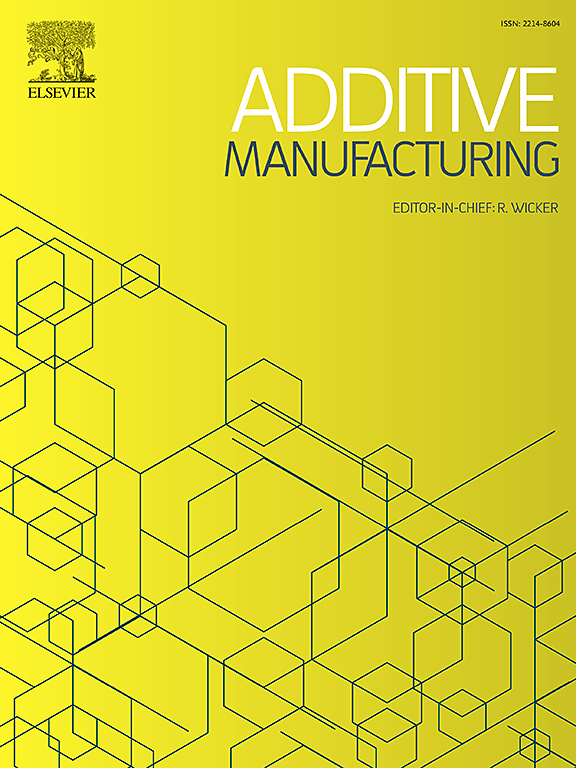IF 10.3
1区 工程技术
Q1 ENGINEERING, MANUFACTURING
引用次数: 0
摘要
立体光刻(SLA)是近几十年来应用最广泛的增材制造技术。然而,商用树脂的潜在毒性阻碍了立体光刻产品在生物医学领域的应用。为了提高打印对象的生物相容性,以往的研究一直积极致力于降低树脂的毒性。遗憾的是,目前尚缺乏全面、可靠的证据来确定SLA打印物在化学水平上的毒性来源。在此,我们通过综合毒性测试和洗脱表征确定了立体光刻物体毒性的主要贡献者。结果表明,从立体光刻部分中浸出的交联剂UDMA、单体HPMA和光引发剂TPO显著降低了细胞活力。在洗脱的化合物中,交联剂UDMA的毒性贡献最大,其洗脱是由于光聚合反应不完全所致。低光聚合度使得一些交联剂UDMA仅在聚合物链的一端共价键合。由于不稳定的结合,悬垂的侧链很容易被溶剂洗脱,导致固化树脂交联密度低,洗脱化合物含量高。根据验证的机制,我们通过厌氧立体光刻和树脂涂层分别将洗脱化合物的含量降低了34% %和82% %,从而将立体光刻部件的毒性等级从ISO标准的严重提高到轻微。总体而言,本研究在化学水平上阐明了立体光刻物体的毒性机制,并提出了初步的解决方案,进一步促进了增材制造在生物医学领域的应用。本文章由计算机程序翻译,如有差异,请以英文原文为准。
Toxicity of stereolithography 3D printed objects at the chemical level and strategies to improve biocompatibility
Stereolithography (SLA) is the most widely used additive manufacturing technology in recent decades. The potential toxicity of commercial resins however hinders the application of stereolithographic products in the biomedical usage. To improve the biocompatibility of printed objects, previous studies have been actively devoted to reducing the toxicity of resins. Regrettably, there still lacks comprehensive and solid evidence to determine the toxicity origin of SLA printed objects in chemical level. Herein, we identified the primary contributors to the toxicity of stereolithographic objects through comprehensive toxicity testing and eluate characterization. The results showed that crosslinker UDMA, monomer HPMA, and photoinitiator TPO leached from stereolithographic parts significantly reduced cell viability. Among the eluted compounds, crosslinker UDMA contributes the greatest to toxicity, and its elution is due to incomplete photopolymerization reactions. The low degree of photopolymerization allows some crosslinker UDMA to covalently bond to the polymer chain only at one end. The dangling side chains are readily eluted by solvents due to unstable binding, resulting in low crosslink density and high content eluted compounds of the cured resin. Drawing upon validated mechanisms, we reduced the content of eluted compounds by 34 % and 82 % via anaerobic stereolithography and resin coating, respectively, which improved the toxicity grade of stereolithographic parts from the ISO standard of severe to slight. Overall, this study elucidates the toxic mechanism of stereolithographic objects at the chemical level and proposes preliminary solutions that further promote the application of additive manufacturing in biomedical fields.
求助全文
通过发布文献求助,成功后即可免费获取论文全文。
去求助
来源期刊

Additive manufacturing
Materials Science-General Materials Science
CiteScore
19.80
自引率
12.70%
发文量
648
审稿时长
35 days
期刊介绍:
Additive Manufacturing stands as a peer-reviewed journal dedicated to delivering high-quality research papers and reviews in the field of additive manufacturing, serving both academia and industry leaders. The journal's objective is to recognize the innovative essence of additive manufacturing and its diverse applications, providing a comprehensive overview of current developments and future prospects.
The transformative potential of additive manufacturing technologies in product design and manufacturing is poised to disrupt traditional approaches. In response to this paradigm shift, a distinctive and comprehensive publication outlet was essential. Additive Manufacturing fulfills this need, offering a platform for engineers, materials scientists, and practitioners across academia and various industries to document and share innovations in these evolving technologies.
 求助内容:
求助内容: 应助结果提醒方式:
应助结果提醒方式:


